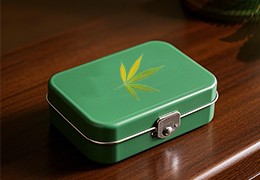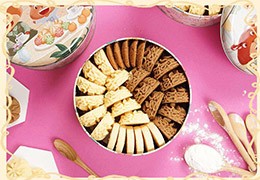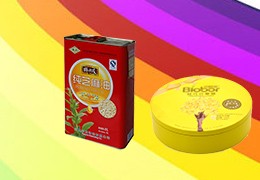Customizing...
Tin box is the best eco-friendly packaging
1. Tin box raw materials
The raw material of the tin box is tin-plated iron. There are two ways to produce tin-plated iron sheets. One is to use iron ore coke-based mineral resources production, and the other is to use tinplate can recycling materials. The quality of tin-plated iron produced by these two methods is the same, and the production of tin-plated iron does not require cutting down trees and does not destroy the ecological balance.

2. Process and cost advantages
The traditional tinplate boutique box is formed by installing the metal mold on the punching machine and pressing it with the punching machine. Tinplate boxes and handmade cartons are currently the representatives of domestic gift boxes. In comparison, tinplate boxes are more labor-saving than handmade cartons. They do not use glue in the production process and are safer and more environmentally friendly. Iron boxes are more efficient than handmade cartons. Cost advantage.
3. Sustainable Development
A. Recyclable. The tin can itself has a feature that other packaging materials do not have, that is, it can be adsorbed by magnets, so that the tin can can be separated from the waste by the magnetic force of the magnetic separator. Recycle tin cans. So the biggest advantage of tinned iron packaging is sustainability, as it has unlimited recycling capacity. Among all packaging materials, metal packaging (especially tin-plated iron) has the highest recovery rate. In 2020, the recycling rate of metal packaging in Germany reached 92.63%, the recycling rate of tin-plated iron was about 93.54%, and the recycling rate of aluminum was 88.24%, while the recycling rate of plastic packaging in Germany was only about 49.17%.

b. Low pollution. The main raw material in the tin can container is tin-plated iron, which is actually environmentally harmless and can be decomposed naturally, because when the tin can exists in the environment, it can be naturally oxidized and return to the original iron oxide state, returning to nature, so scrap iron The stacking of cans can be decomposed by time, and it will not remain and cause environmental pollution. At the same time, it is not necessary to cut down trees to make iron cans, so as not to damage the ecological balance.
c. save resources. In terms of removing other contamination residues on tin cans, shredder equipment has been developed, which can effectively remove more than 98% of contaminants and provide good quality scrap iron filings. Compared with iron ore production, the use of tin-plated iron scraps to produce steel can save about 230 cubic meters of natural gas consumption per ton of scrap iron scraps. Therefore, the recycling process of iron cans can reduce the impact on the global environment and energy. In line with future product trends.
D. The purpose of Metal Recycling is to promote a higher percentage of metal packaging recycling. As the Chinese government promotes waste sorting and the public's increasing awareness of environmental protection, the recycling rate of metal packaging, especially tin-plated iron boxes in China will also increase.
4. Strong secondary utilization function
Compared with handmade paper boxes, iron boxes are used as a form of packaging. After use, the secondary utilization function is stronger than that of handmade paper boxes. From the most basic functions of storage boxes, stationery boxes and piggy banks, to the development of more Creative reuse functions, such as candle cans, audio cans, etc., greatly extend the service life of the iron box.

5. Conclusion
From the banning of plastic packaging in some European countries to the timetable for a number of major companies to ban plastic packaging, sustainable development has been raised to an unprecedented height. We put an end to excessive packaging, minimize the use of single-use items, and minimize the use of packaging that has no reuse function.
The tin box can be recycled and reused infinitely, which is in line with the current global sustainable development concept and is the most environmentally friendly packaging. High-quality tin boxes (miscellaneous cans) are widely used for packaging food, candy, chocolate, electronic products, tobacco, wine, tea, cosmetics, medicines, etc. due to their material characteristics and technological advantages.
We believe that with the joint efforts of brand owners and the tin box packaging industry, tin box packaging will have a broader space for development in the future, and can contribute more to the environment and sustainable development on which we depend.


















Latest comments